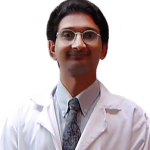Cardiovascular Disease
Introduction Coronary heart disease (CHD) is the biggest killer, around one in five men and one in seven women die from the disease. CHD affects more men than women, and your chances of getting it increase as you get older. About the heart The heart is a muscle that is about the size of your fist. It pumps blood around your body and beats approximately 70 times a minute. After the blood leaves the right side of the heart, it goes to...
Tendon Repair
Introduction Tendon repair of the hand is surgery to repair damaged or divided tendons. Most tendon damage is caused by cuts to the hands from glass or knives. What are tendons? Tendons are tough cords of tissue that connect muscles to bones. When you contract (tighten) a group of muscles, the attached tendons will pull on certain bones, allowing you to make a wide range of physical movements. There are two groups of tendons...
Urinary Tract Infection
Introduction A urinary tract infection (UTI) is a common infection that occurs in the urinary tract (any part of the body used to make and get rid of urine). Symptoms of a UTI in babies and infants include: Vomiting High temperature of or above 38°C (100.4°F) Irritability Appearing lazy and sluggish (lethargic) Symptoms of a UTI in older children include: frequent passing of urine complaining of pain or a burning sensation when...
Hernia
Introduction A hernia is where an internal part of the body pushes through a weakness in the muscle or surrounding tissue wall. The muscles are usually strong enough to keep the organs in place. However, a weakness may cause a hernia to occur. Types of hernia Hernias can occur anywhere in your abdomen (the area of your body between your chest and hips). There are several different types of hernia, which are described below. Inguinal...
Hernia Repair, Hiatal
Introduction A hiatus hernia means that part of your stomach has squeezed through an opening in your diaphragm and into your chest. The stomach normally sits in the abdomen, underneath a large, thin sheet of muscle called the diaphragm. The opening in the diaphragm that the stomach can push through is called the hiatus. Your oesophagus (tube that carries food to your stomach) passes through the hiatus to reach your stomach. How a...

 Dr. Bimal Shah is the senior most General & Laparoscopic surgeon in Mira – Bhayandar with largest series of operations. He also consults at Borivali – Dahisar. He believes in ethical practice & is available at only trust hospitals. He passed out from KEM hospital, Mumbai in 1993 and was a lecturer training newer surgeons & medical students till 1998.
Dr. Bimal Shah is the senior most General & Laparoscopic surgeon in Mira – Bhayandar with largest series of operations. He also consults at Borivali – Dahisar. He believes in ethical practice & is available at only trust hospitals. He passed out from KEM hospital, Mumbai in 1993 and was a lecturer training newer surgeons & medical students till 1998. 







